Pickleball paddle grip: a comprehensive guide
In the dynamic world of pickleball, your success hinges not just on agility or technique but significantly on how well you handle your paddle. The right Pickleball paddle grip is more than just a comfortable hold; it’s a critical ally in turning swift movements into victorious strokes. This comprehensive guide explores the profound impact of mastering your paddle grip, unveiling how a subtle change in handling can dramatically enhance your game’s precision and power. As we delve into the nuances of various grip techniques, prepare to transform your approach and elevate your play to unparalleled heights.
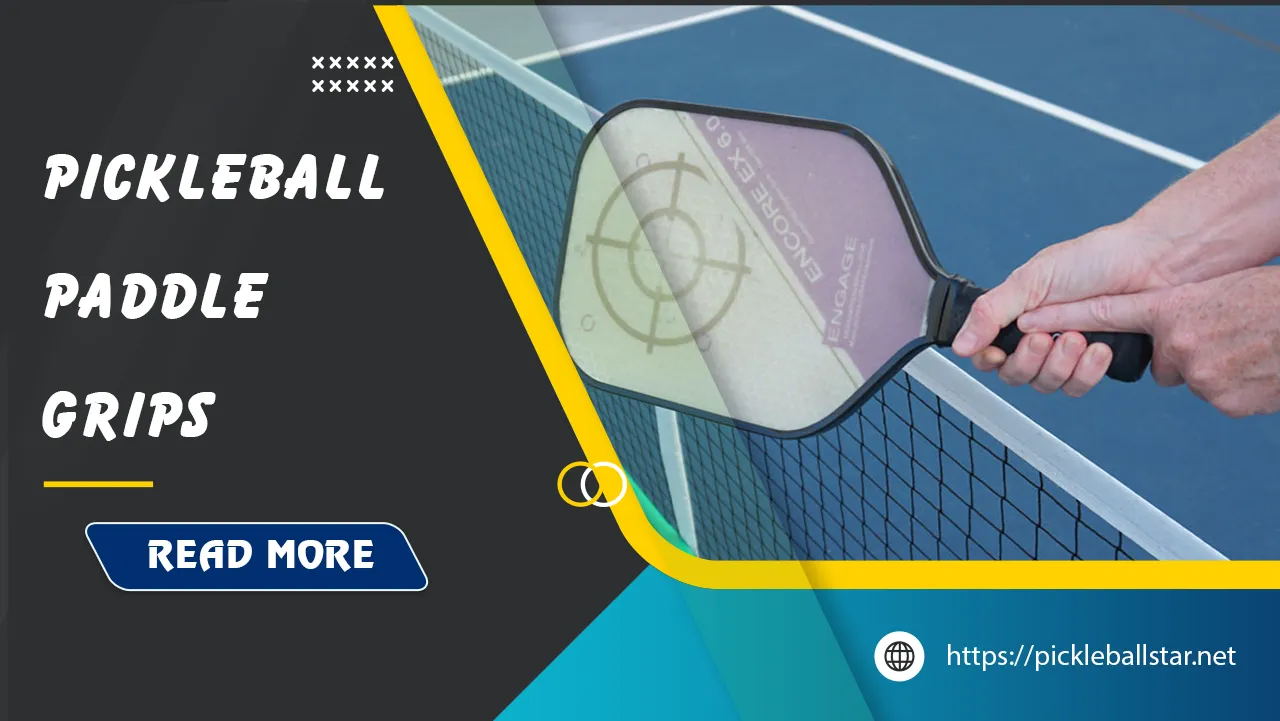
Understanding the importance of Pickleball paddle grip
The role of grip in pickleball
Gripping your pickleball paddle may seem straightforward, but this seemingly minor detail plays an outsized role in your gameplay. Grip serves as the mediator between your hand and the paddle, allowing you to channel your strength and dexterity effectively. Think of your paddle grip as the steering wheel of a car; just as a loose or tight steering wheel hampers control, an improper grip can derail your game.
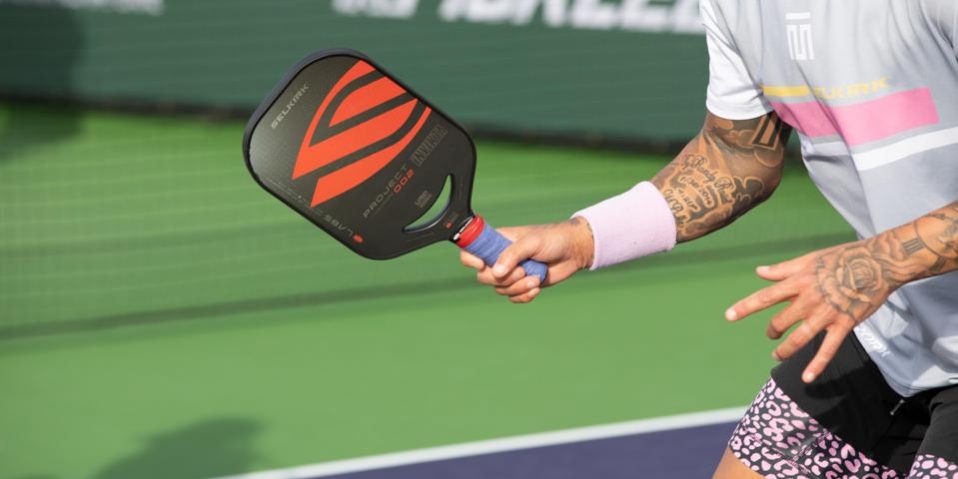
Essentially, the grip acts as the delivery system for transmitting your tactical intents into successful and precise actions. Whether you’re going for a powerful serve, a controlled volley, or a delicate dink, the way you hold your paddle dramatically influences these shots’ outcomes.
Consider the analogy of holding a pen to write. If you grip the pen too tightly or too loosely, your handwriting suffers. Similarly, improper grip pressures can lead to strained muscles or flawed shots, affecting your gameplay consistency. In other words, mastering your grip isn’t just a gimmick; it’s foundational to developing a robust pickleball game.
Benefits of a proper grip
The right grip works as a conduit for agility, strength, and precision in your game. One of the primary benefits is the flexibility it offers in executing various shots. When holding your paddle with a relaxed yet firm grip, you can achieve a wider range of wrist movements, allowing for better paddle rotation and shot accuracy. This, in turn, makes it easier to adapt to different match scenarios.
Moreover, the correct grip can significantly impact your endurance. Imagine trying to squeeze a stress ball for hours without relief. Over time, this exertion brings about fatigue and potential injuries. Similarly, an improper paddle grip could lead to excessive strain on your wrist and forearm muscles, upping your chances of developing conditions like pickleball elbow.
The grip also directly influences your shot’s spin and speed. A firm grip is generally favored for groundstrokes as it grants better control over powerful hits. Contrarily, a looser grip allows more wrist action, making it easier to generate spin and execute snap shots. This balance between firmness and flexibility can become your secret weapon for unsettling your opponents.
For example, having a grip pressure of 3-4 out of 10 can offer the best balance between control and power. This allows you to “feel” the ball on the paddle, facilitating a more nuanced and controlled game.
Types of pickleball grips
In the grand tapestry of pickleball, the range of grips available offers players a spectrum of options to suit their gameplay styles. Each grip type has distinct advantages and disadvantages, tailor-fitting various game scenarios from serves and volleys to dinks and smashes. Here’s a detailed look at some of the most popular grips:
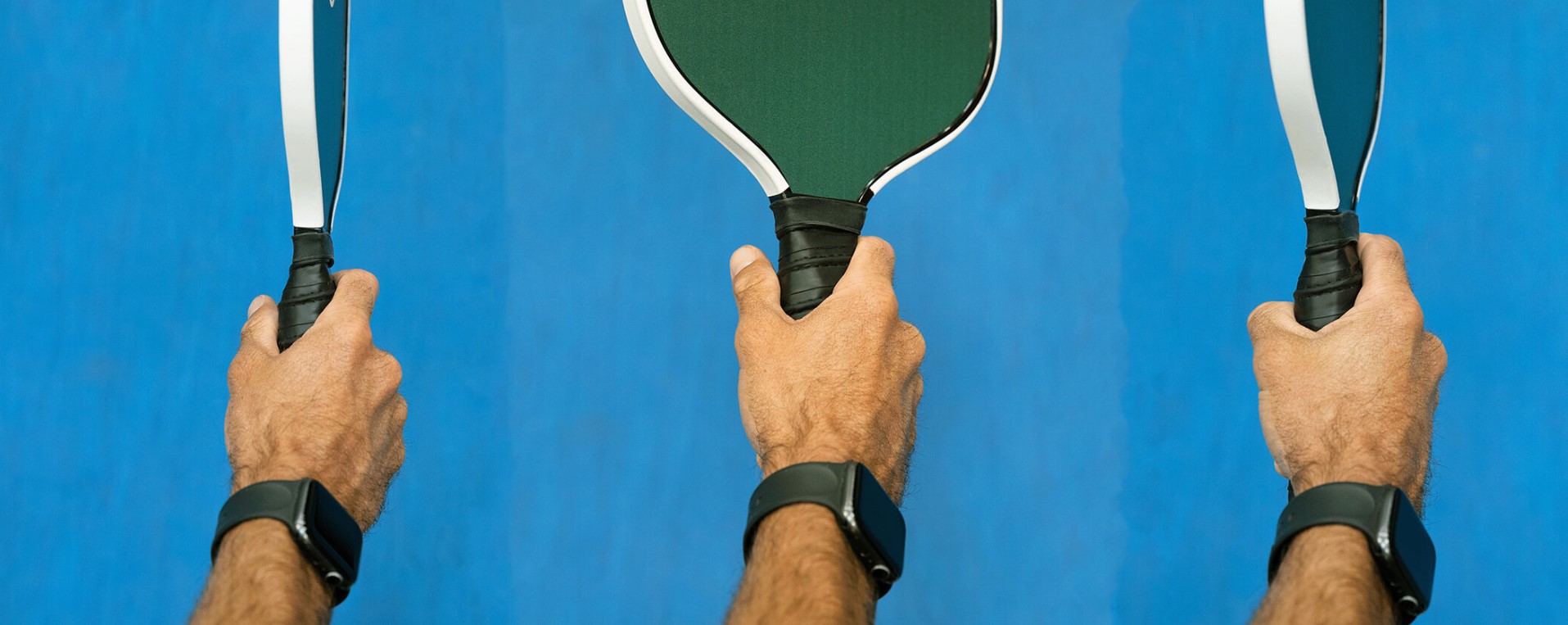
Eastern grip (the “shake hands” grip)
The Eastern grip is often regarded as the “jack-of-all-trades” in pickleball. Styled similarly to shaking someone’s hand, this grip involves placing the paddle in a handshake position and wrapping your fingers around it.
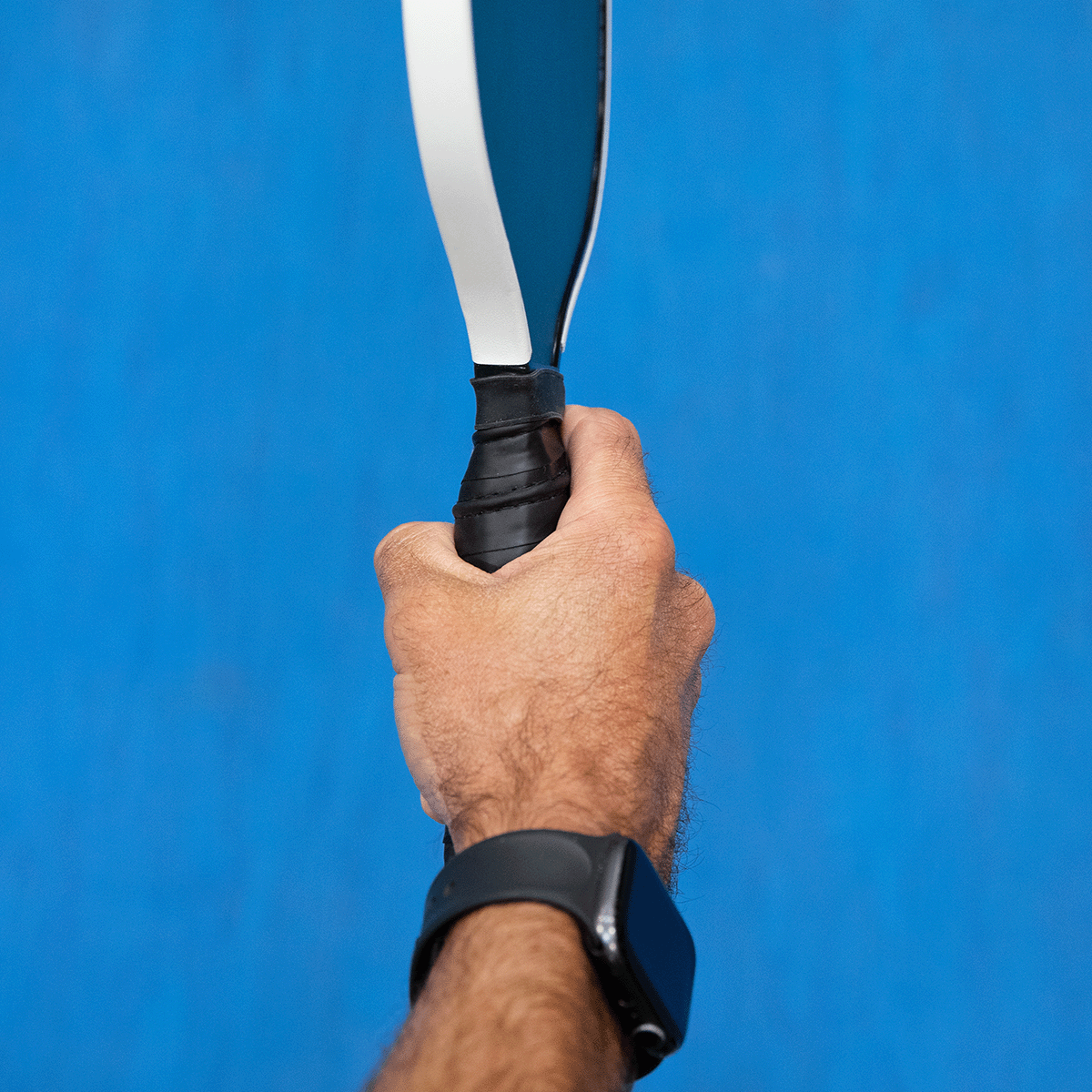
- Pros:
- Versatility: Offers balanced control for both forehand and backhand shots.
- Comfort: The neutral hand position makes it easier for beginners to adopt.
- Flexibility: Useful in various scenarios, from serves to volleys.
- Cons:
- Limited Spin: Produces less topspin compared to other grips.
- Power Limitation: Might lack the power generated by more specialized grips.
Due to its balanced characteristics, the Eastern grip is ideal for players new to the sport. However, as one advances, they might shift to grips offering specialized benefits.
Western pickleball grip (the “frying pan” grip)
The Western grip is often likened to holding a frying pan, where the hand rests behind the paddle during forehand strikes. This allows maximum power generation and is particularly useful for unleashing formidable topspin shots.
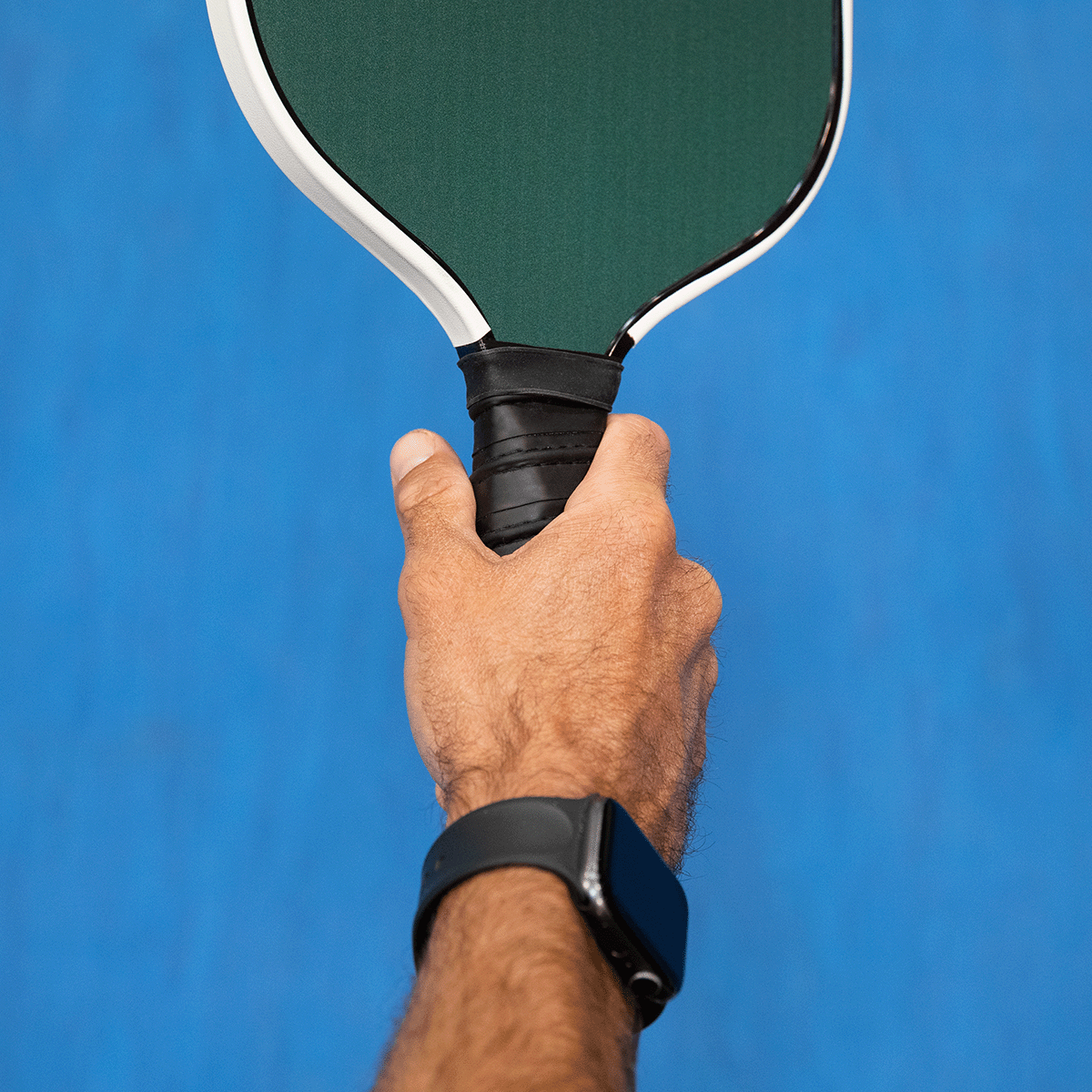
- Pros:
- Power: Essential for forehand shots that require maximum force.
- Topspin: Easily generates topspin due to the paddle’s closed face.
- Cons:
- Backhand Difficulties: Less effective for backhand shots.
- Maneuverability: Not ideal for quick adjustments or defensive positioning.
Often favored by aggressive players who aim to dominate the court with powerful forehand shots, this grip requires diligent practice to balance power and control seamlessly.
Continental grip (the “chameleon” grip)
Dubbed the “Chameleon” grip because of its adaptability, the Continental grip is versatile and conducive for quick changes between forehand and backhand shots. This grip places the “V” formed by the thumb and forefinger atop the paddle handle.
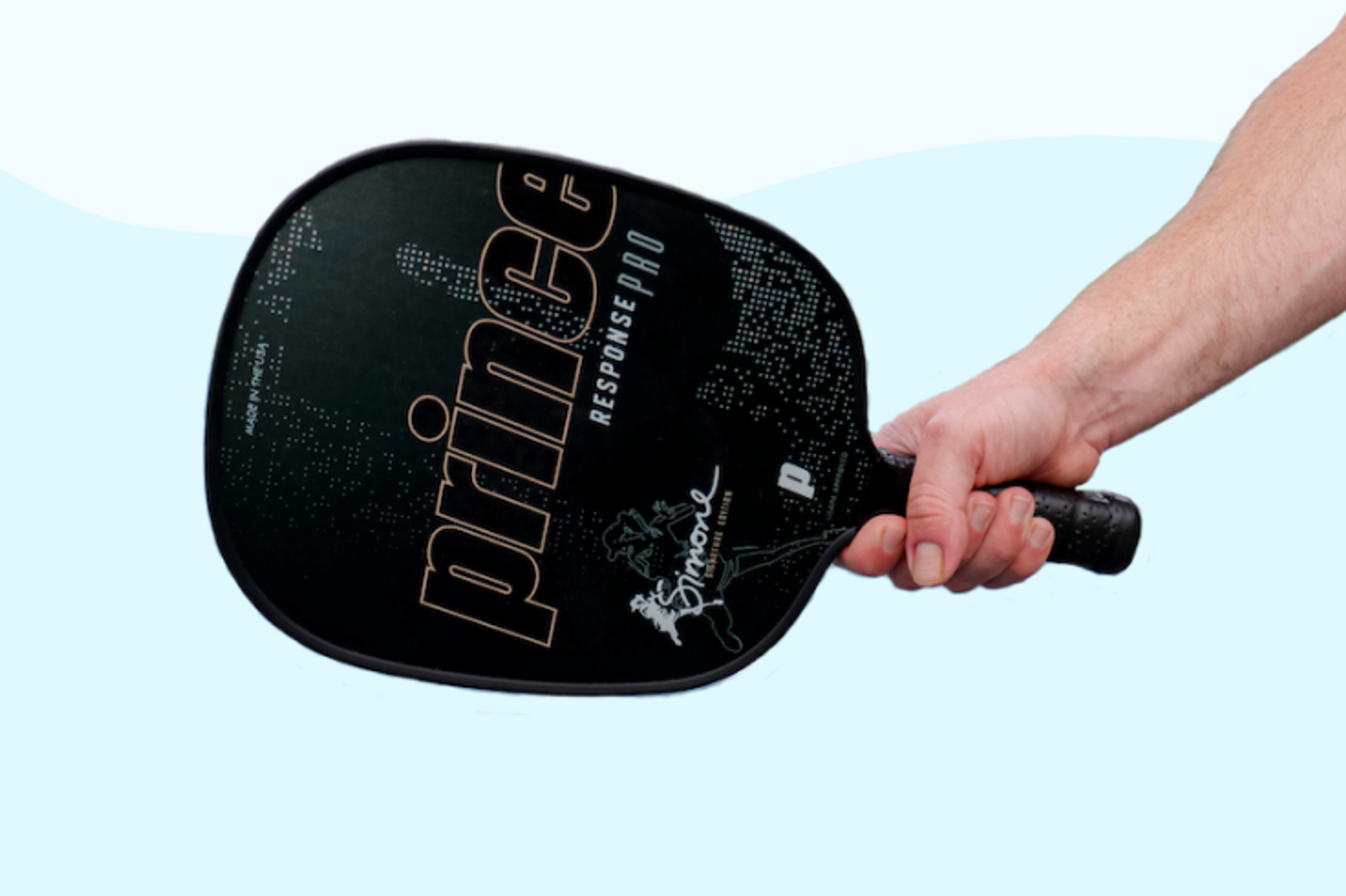
- Pros:
- Balance: Equally effective for forehand and backhand strikes.
- Adaptable: Requires fewer adjustments between different types of shots.
- Precision: Ideal for accurate dinks and defensive shots.
- Cons:
- Learning Curve: Can be tricky for beginners due to the nuanced positioning.
- Power Limitations: Sacrifices some power on forehand shots compared to other grips.
This grip is excellent for advanced players who have the technical skills to switch between various shots seamlessly and are looking for dynamic gameplay adaptability.
Penhold grip (the “table tennis” grip)
Borrowed from table tennis, the Penhold grip is an unconventional but effective method. It involves holding the paddle as one would a pencil or table tennis bat, with the fingers on one side and the thumb on the other.

- Pros:
- Comfort: Familiar to those transitioning from table tennis.
- Control: Offers excellent maneuverability and control over delicate shots.
- Cons:
- Limited Power: Forehand shots may lack power.
- Learning Curve: Different from conventional grips, requiring significant adjustment.
- Backhand Constraints: Particularly challenging for executing effective backhand shots.
This grip is seldom seen in mainstream pickleball but could be beneficial for players comfortable with table tennis techniques. It shines in niche scenarios requiring heightened control and agility.
Read more: How to grip a Pickleball paddle?
Choosing the right grip size
Ensuring the correct grip size for your pickleball paddle can make or break your game. A grip that’s too big or small can significantly influence your control, comfort, and power, akin to wearing shoes that don’t fit right they either pinch or don’t provide adequate support. Here’s a line-up of ways to determine your optimal grip size:
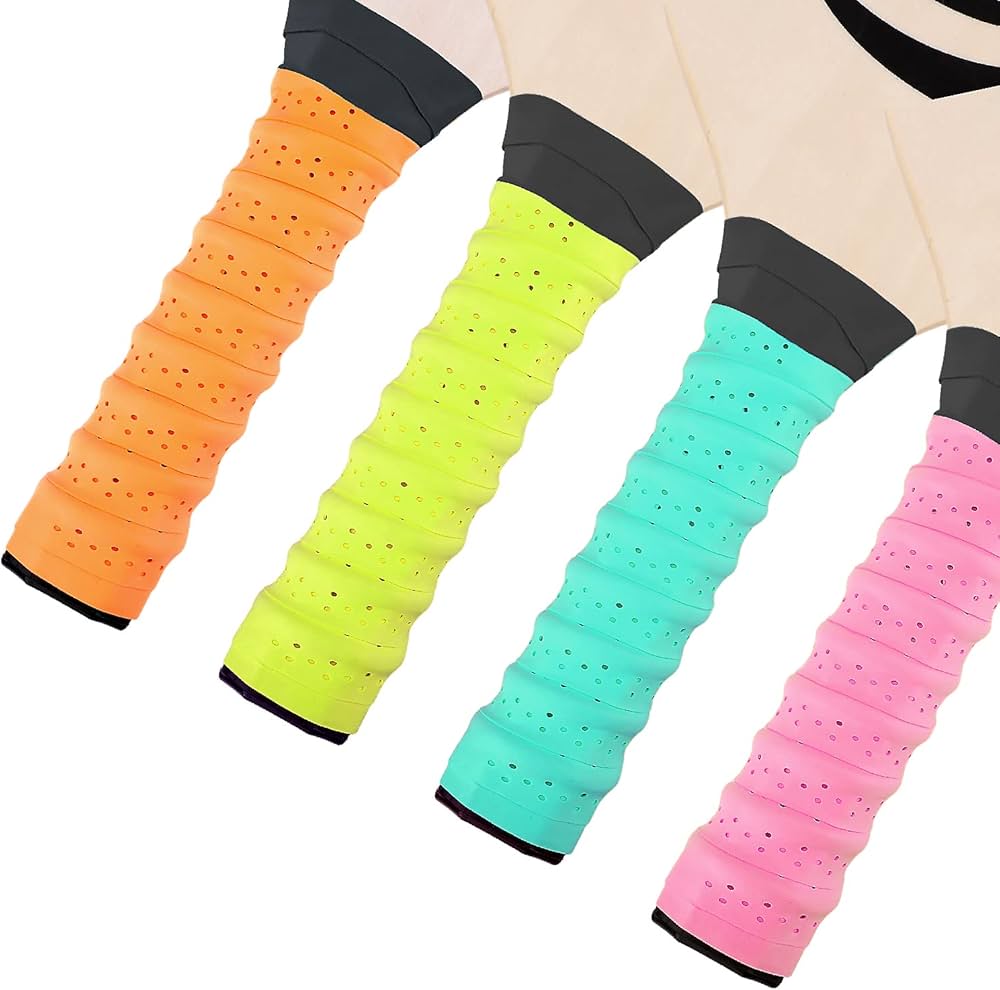
Measuring your grip size
To measure your grip size accurately, all it takes are some basic hand measurements and a reference to a grip size chart, usually provided by manufacturers. The process involves:
- Hand Measurement Method:
- Place your hand flat with fingers extended and together.
- Measure the distance from the tip of your ring finger to the bottom crease of your palm.
- Refer to a grip size chart that ranges from approximately 4 inches to 4.5 inches in increments of 1/8 inch.
- Height Test Method:
- Hold the paddle in your dominant hand with the palm facing up.
- Measure from the tip of your ring finger to the middle crease of your palm.
- Compare your hand measurement to the recommended grip size on a chart.
- Finger Length Test Method:
- Measure the length from the tip of your ring finger to the middle crease of your palm.
- Use this measurement to determine the preferred grip size from a chart.
Each method provides a similar reading, but the ultimate choice should feel comfortable and natural when you hold the paddle.
Height test for pickleball grip size
The Height Test is another effective method to ensure optimal grip size. Although it might come across as a more simplified approach, it provides valuable guidance.
- Steps:
- Hold the pickleball paddle naturally in your dominant hand.
- Use a ruler to measure the distance from the tip of your ring finger to the middle crease of your palm.
- Use this measurement to correlate with the grip size in the manufacturer’s chart.
Generally, taller players might need a slightly larger grip size, enhancing their ability to wield the paddle with more control and stability during forceful swings.
Finger length test for pickleball grip size
The Finger Length Test is a more straightforward technique and can sometimes be more intuitive:
- Steps:
- Measure from the tip of your ring finger to the bottom crease of your palm.
- This distance typically translates to a specific grip size.
For example, if your measurement is around 4 inches, starting with a grip size in the 4-4.25 inch range is advisable. If tailored adjustments are necessary, adding an overgrip can help.
Index finger test for pickleball grip size
Using the Index Finger Test can further fine-tune your grip choice:
- Process:
- Hold the paddle handle naturally with your primary grip.
- Slide the index finger of your other hand between your ring finger and the palm’s bottom.
- If the index finger fits snugly, the grip size is appropriate. If it slides past the ring finger, the grip is too large. If it feels too tight, the grip size is too small.
This simple yet effective test provides immediate feedback, aligning your grip configuration more harmoniously with your hand’s natural form.
When in doubt as to pickleball grip size
When uncertainty lingers, erring on the side of a smaller grip is a practical approach. The rationale is simple: a smaller grip can always be expanded using overgrip tapes, but reducing a large grip is more complicated. Testing different paddles by borrowing or renting them can also shed light on which grip size feels most natural and comfortable.
Consequences of an incorrect grip size
Playing with an incorrect grip can undermine your gameplay and lead to physical discomfort. A smaller grip can cause:
- Fatigue and Strain: Increased muscle tension in the wrist and forearm may lead to pickleball elbow.
- Control Issues: An overly tight grip to compensate for size may reduce fluid movement, limiting shot precision.
Read more: Best small gip Pickleball Paddles – A Comprehensive Guide
Conversely, a larger grip can lead to:
- Reduced Mobility: Decreased wrist flexibility hampers your ability to generate spin or change shot directions quickly.
- Control Sacrifice: Potential instability when hitting harder shots due to less grip control.
In essence, an incorrect grip size diminishes your natural playing style, necessitating unnecessary adjustments and compromising both comfort and performance.
Read more: Best long handle pickleball paddles in 2024
Mastering grip transitions
Mastering grip transitions allows pickleball players to seamlessly move between different types of shots without losing control or precision. This skill, much like a dancer shifting gracefully between stances, enhances fluidity and versatility in-game, presenting a significant strategic advantage.
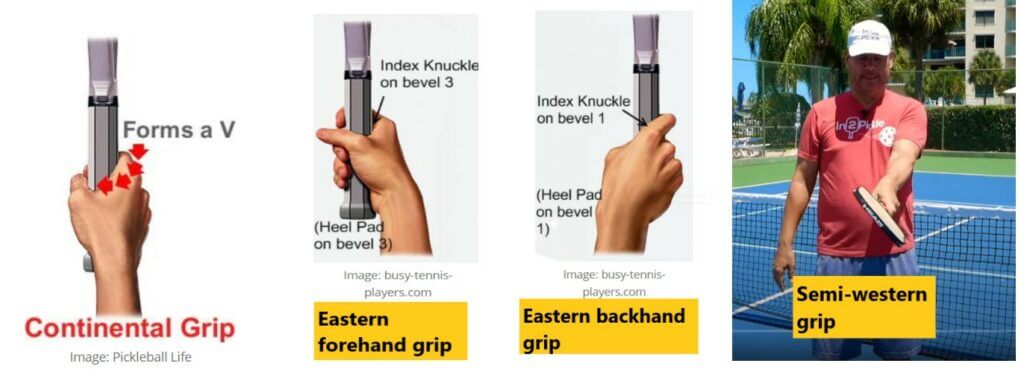
Why transition between grips?
To understand why grip transitions are vital, consider the following scenarios:
- Specialized Shots: Different grips are optimized for different shots. For instance, the Continental grip is excellent for backhand power shots, whereas the Eastern grip shines during forehands and serves.
- Spin Variability: By transitioning grips, you can manipulate the spin on the ball. Switching from an Eastern to a Western grip, for example, assists in applying topspin, which can bewilder your opponent.
- Reach Optimization: Adjusting grips helps maximize your reach and positioning, especially for balls edging out of your natural strike zone.
Effectively, transitioning grips elevates your ability to respond agilely to varying on-court situations, fostering a dynamic gameplay style.
Techniques for smooth transitions
Executing grip transitions smoothly necessitates practice and technique:
- Initiate with Both Hands: Utilize both hands initially to stabilize the paddle.
- Bring the Paddle Close: Hold the paddle nearer to your body as you switch the dominant hand’s position.
- Maintain Paddle Face Parallel: Rotate the paddle while keeping its face parallel to the ground.
- Grip Constantly: Ensure a firm grip during the transition to minimize the risk of losing control.
Think of this process like shifting gears in a car; smooth, coordinated actions are key to achieving seamless transitions.
Additionally, incorporating these techniques into your practice sessions can increase your muscle memory, ensuring the transitions become second nature during actual gameplay.
Strategic advantages of grip transitions
Mastering grip transitions can provide strategic advantages that can tip the scales in your favor:
- Versatility: Expanded shot selection ability due to effective transitions.
- Spin Control: Enhanced capability to generate diverse spins, thus disrupting an opponent’s rhythm.
- Adaptability: Improved court coverage and adaptability to different playing styles.
- Unpredictability: Less predictable gameplay, making it hard for opponents to anticipate your next move.
- Injury Mitigation: Proper transitions reduce the risk of strain and injury by maintaining optimal form.
These strategic advantages collectively contribute to a more robust and unpredictable playing style, presenting hurdles for even the most seasoned opponents.
How grip affects your game
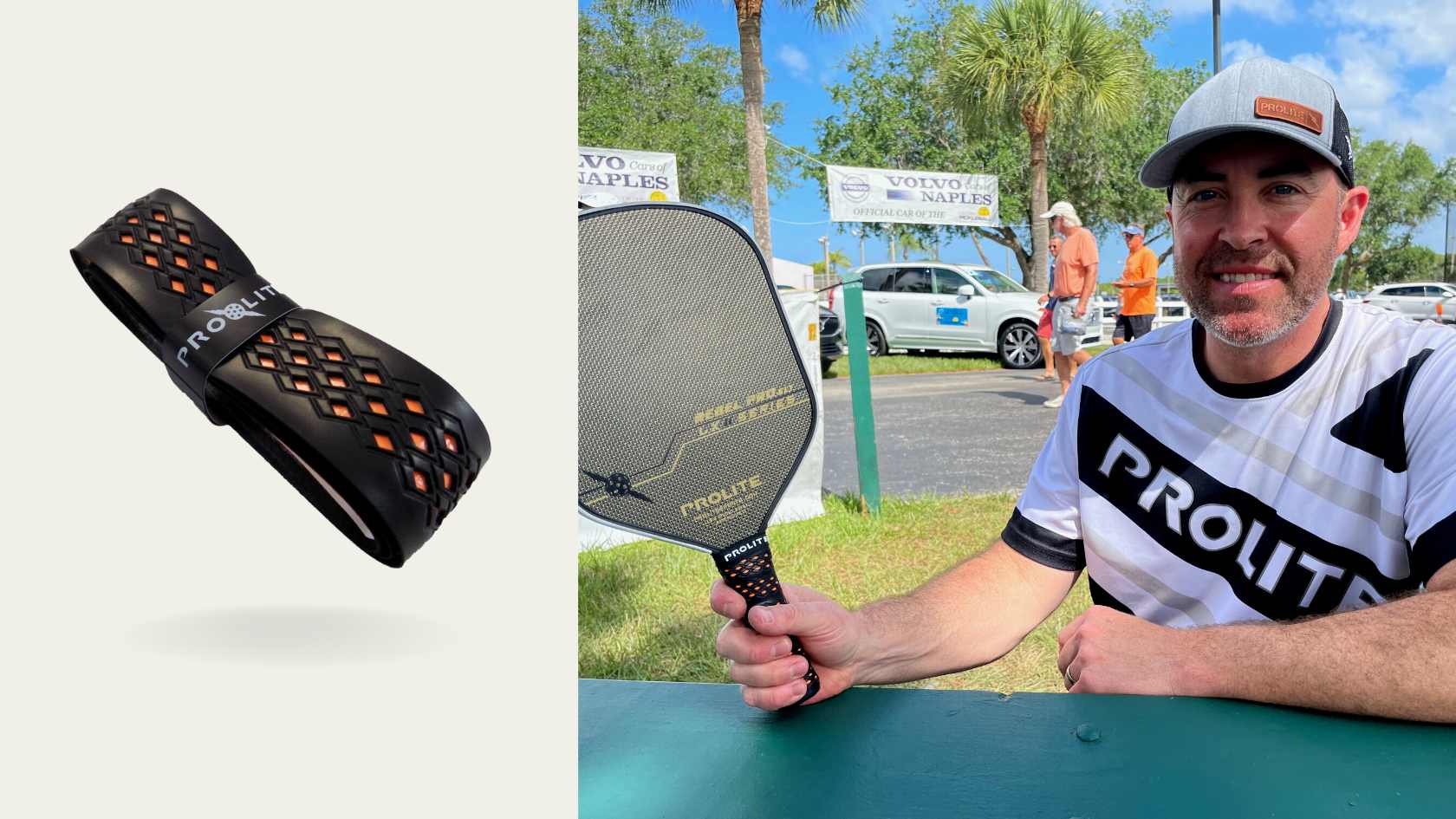
Trajectory control
The position of your grip profoundly influences your control over the ball’s trajectory. Holding the paddle correctly can dictate the ball’s path, spin, and speed, providing the accuracy required to aim precisely. For example:
- The Eastern Grip: Aligns the “V” of your hand with the paddle edge, offering balanced control and an ideal mix of power, making it excellent for dinks and serves.
- The Continental Grip: The “V” atop the first bevel provides better command over backhand shots, enhancing precision in defensive and offensive maneuvers.
In essence, the nuanced variations in grip position can determine how effectively you maneuver the ball to land exactly where you intend it to, converting your strategic thoughts into practical gameplay.
Spin dynamics
Your grip is instrumental in generating different types of spins, adding variety and complexity to your game.
- Topspin: Primarily facilitated by the Western grip, which places the “V” on the left side of the handle, allowing the paddle face to generate upward spin.
- Backspin: Achieved through slight modifications in grip pressure and hand positions, adding a perplexing layer for your opponent to decipher.
- Sidespin: Possible with skillful wrist and grip maneuvers, introducing lateral ball movement.
Mastering spin techniques effectively befuddles opponents, disrupting their timing and positioning while opening up the court for more aggressive strikes.
Power transmission
The way you grip your paddle forms the bridge for power transmission from your body to the paddle:
- Firm Grip: Essential for powerful smashes and drives, offering maximum control and force, particularly useful for delivering decisive, high-impact shots.
- Flexible Grip: Allows more wrist action, providing agility and adaptability in executing delicate shots or quick volleys.
Strategically adjusting your grip based on the shot type ensures efficient power transmission, optimizing both strength and precision in every stroke.
Overall, honing your grip techniques catalyzes improvements across trajectory control, spin dynamics, and power delivery, illustrating just how foundational a proper paddle grip is to excelling in pickleball.
Read more: Best pickleball grip for sweety hands
Common grip mistakes
While the right grip can elevate your gameplay, common grip mistakes may hinder your progress and potentially lead to injuries. Identifying and correcting these errors is crucial for sustaining a high level of performance.
Over-gripping
Over-gripping the paddle, often stemming from a desire to maintain control, can backfire badly. A grip that’s too tight restricts wrist movement, stifles fluidity, and can lead to increased arm strain over time. This is akin to gripping a golf club or hammer too tightly, making each swing or strike laborious rather than fluid.
Over-gripping:
- Limits Flexibility: Reduces the wrist’s freedom to maneuver, stifling your ability to rotate the paddle swiftly.
- Increases Fatigue: Engenders unnecessary muscle strain, leading to faster fatigue and potential overuse injuries.
Incorrect paddle face angle
An incorrect paddle face angle often results from improper grip techniques. Each grip type whether Eastern, Western, or Continental dictates a unique paddle angle that optimizes its intended use:
- Eastern Grip: Angles the paddle face to enable topspin generation efficiently.
- Western Grip: Close paddle face angle isn’t suitable for backhand shots.
- Continental Grip: Offers a more neutral face angle conducive for precise dinks and defensive plays.
Gripping incorrectly can lead to misalignment, causing uncontrolled shots and missed opportunities on the court.
Not adjusting grip pressure
Grip pressure is dynamic and needs adjustment based on the shot being executed:
- Tight Grip (5-6/10): Suitable for hard serves and smashes, ensuring control over high-power shots.
- Loose Grip (3-4/10): Facilitates better wrist action for softer touch shots, volleys, and spins.
Neglecting to adjust your grip pressure can compromise both control and comfort, deterring effective shot execution. Purposefully modulating grip pressure ensures the ideal balance for different game situations.
In essence, overcoming grip-related mistakes involves mindful practice and adjustments to your grip technique, mitigating risks, and optimizing game efficiency.
FAQs
What is the difference between the pickleball paddle grip and other racquet sports?
The grips in pickleball are uniquely tailored for its gameplay dynamics, unlike those in tennis or badminton, which use elongated and differently structured rackets. The grip size for pickleball paddles generally ranges from 4 to 4.75 inches in circumference, significantly smaller than tennis grips, accommodating the more intricate wrist maneuvers characteristic of the sport. Moreover, the key grips in pickleball Eastern, Western, and Continental offer varied applications:
- Pickleball Grips: Diverse grip styles tailored for nuanced wrist action and control over shots.
- Tennis Grips: Predominantly use the Eastern grip for all-around gameplay, given the larger racket size and different dynamics.
Understanding these distinctions ensures you adopt the correct grip style aligned with pickleball’s unique gameplay requirements.
How often should I reassess my grip size?
Reassessing your grip size periodically is essential for maintaining optimal control, especially if you experience discomfort or changes in your playing style. Precision in measuring grip size evaluating the distance from the palm’s base to the ring finger’s tip helps in aligning with the correct grip size. Additionally, reassessing if switching to a new paddle or after extended playtime offers insights:
- Frequency: Every 6-12 months or when adjusting your playing style.
- Method: Measure from the bottom palm crease to the top of the ring finger and match with grip charts.
Having the right grip size enhances comfort, minimizes strain, and ensures maximal control.
Read more: How to replace pickleball paddle grip
Is the Continental grip suitable for beginners?
The Continental grip, or the “hammer grip,” isn’t deemed ideal for beginners due to its complexity favoring nuanced backhand and dink shots. More accessible for advanced players, the grip’s adaptability suits experienced players but complicates things for novices. Consequently, the Eastern grip is advised for beginners due to:
- Neutral Orientation: Balances forehand and backhand easily.
- Versatility: Familiarizes beginners with various shot-types without needing constant adjustments.
How to replace a pickleball grip?
To replace a grip, follow these steps meticulously:
- Remove Old Grip: Unwind the existing grip and clean the handle thoroughly.
- Wrap the New Grip: Start wrapping from the bottom (butt-cap) tightly, ensuring slight overlaps.
- Trim and Secure: Trim excess at the top and secure the grip with finishing tape.
Replacing the grip regularly revitalizes the paddle feel and maintains optimal control, akinto tuning up a musical instrument to ensure it performs optimally.
How to add an overgrip to a pickleball paddle
Adding an overgrip to your pickleball paddle can enhance comfort, adjust the grip size, and provide better tackiness, especially during sweaty or prolonged gameplay. Here’s how to add an overgrip effectively:
Steps to Add Overgrip:
- Preparation:
- Peel off the plastic from the new overgrip.
- Identify the tapered end, which typically starts the wrapping process.
- Initial Wrapping:
- Place the tapered end at the bottom of the paddle handle. Secure it using your thumb while keeping the paddle steady.
- Begin wrapping the overgrip around the handle, making sure each layer overlaps slightly with the previous one. This ensures a uniform application without gaps.
- Secure Wrapping:
- Continue wrapping up the handle with consistent tension, ensuring it stays smooth and flat.
- As you approach the top, mark where the overgrip should end.
- Final Trimming and Securing:
- Unwrap slightly to cut off the excess overgrip at the marked point.
- Rewrap securely and use the included finishing tape or electrical tape to secure the end.
Tips:
- Use even tension while wrapping to maintain consistency and feel.
- Replace the overgrip periodically based on wear and hygiene.
By regularly updating or adding overgrips, your paddle remains comfortable, providing the necessary control and tackiness during dynamic gameplay.
Conclusion
Mastering the art of grip for success in pickleball
In the realm of pickleball, where agility, precision, and power converge in dynamic play, the art of grip holds paramount importance. Mastery of grip isn’t just about knowing different styles or measuring the correct size; it’s about integrating this knowledge seamlessly into your gameplay to achieve unparalleled control and performance.
In conclusion, excelling in pickleball demands more than physical prowess and basic skills; it requires a nuanced understanding and mastery of paddle grips. By focusing on grip styles, sizes, transitions, and common mistakes, you can significantly enhance your control, power, and overall gameplay, giving you the edge needed to dominate the court. So, grab your paddle, reassess your grip, and step onto the court with renewed confidence and capability. Happy playing!
